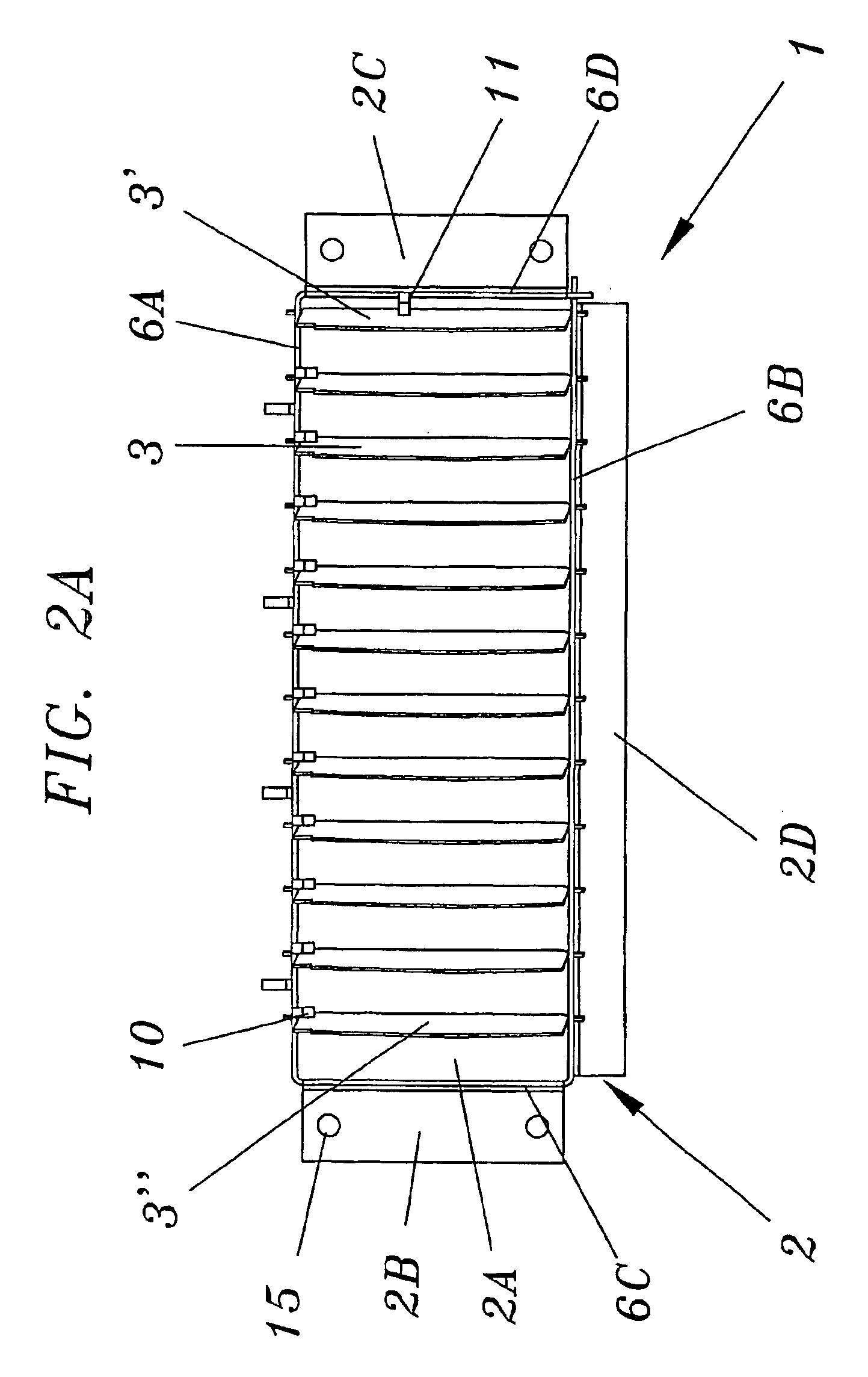Check valve, fan unit, and forced air cooling system
a technology of fan unit and check valve, which is applied in the direction of cooling/ventilation/heating modifications, electrical apparatus casing/cabinet/drawer, lighting and heating apparatus, etc., can solve the problems of inability to use, low efficiency, and high price of valve type, so as to reduce the impedance of air flow
- Summary
- Abstract
- Description
- Claims
- Application Information
AI Technical Summary
Benefits of technology
Problems solved by technology
Method used
Image
Examples
first embodiment
the invention will now be described with specific reference to drawing FIGS. 1-6. Basically, the valve assembly 1 of the invention consists of a generally rectangular frame 2 in which a number of valve vanes 3, 3′, 3″ are pivotally supported, as is best illustrated in FIGS. 1 and 2B. Like in the conventional valves the vanes are pivotal about pivot axes A that are extended generally transversal to the general direction of flow AF (see FIG. 2B) through the valve. The frame 2 has flanges 2B-D likewise extending transversal to the general direction of flow AF and serving to support the valve 1 on a vertical wall 34 of a fan unit 30 casing 31, as will be described more closely below with reference to FIG. 10. For that purpose two of the flanges 2B, 2C are provided with bores 15 for fasteners 16 (see FIG. 10), such as bolts.
The rear side 4 of the frame 2, in effect being the rear side of said flanges 2B-D, is flat and forms a base plane P1 of the valve 1. For the purpose of this descript...
third embodiments
Modified, second and third embodiments of the inventive valve assembly 50, 100 will now be described with reference to FIGS. 7 and 8 that show said embodiments in views corresponding to that of FIG. 5 in order to specifically illustrate the open position angles β, β′ of the vanes 3, 3′, 3″. The valves 50, 100 of FIGS. 7 and 8 are identical to that of the first embodiment, except for the orientation of the vanes in the open position OP. Regarding the different parts of the valves 50, 100 bearing the same reference numerals as in the first embodiment, reference is made to the above description thereof.
In the second embodiment of FIG. 7 the open position angle β′ of the first vane 3′ is chosen to be the same as the angles β, β′ of the first embodiment, i.e. approximately 16°. On the other hand, the open position angle β of the remaining vanes 3, 3″ is chosen to be significantly smaller, in the illustration approximately 10°. Choosing this smaller angle of the vanes even further reduces...
PUM
 Login to View More
Login to View More Abstract
Description
Claims
Application Information
 Login to View More
Login to View More - R&D
- Intellectual Property
- Life Sciences
- Materials
- Tech Scout
- Unparalleled Data Quality
- Higher Quality Content
- 60% Fewer Hallucinations
Browse by: Latest US Patents, China's latest patents, Technical Efficacy Thesaurus, Application Domain, Technology Topic, Popular Technical Reports.
© 2025 PatSnap. All rights reserved.Legal|Privacy policy|Modern Slavery Act Transparency Statement|Sitemap|About US| Contact US: help@patsnap.com



